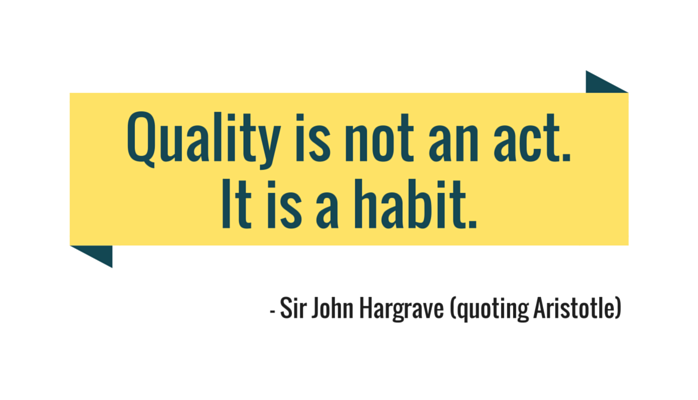I’m talking with a prospective client. We’ll call her Ms. X, because that makes her seem more mysterious. Ms. X is the marketing manager of a large company. She wants to get more traffic to the company website, and is thinking of starting a content marketing program.
“What I want to know,” Ms. X asks me, “is how much content is enough? How many blog posts per week do I need?”
“Do you want the short answer or the long answer?” I ask in return.
“The short answer,” she responds. “I’m busy.”
“A lot.”
She laughs.
“But this is the answer you’d expect from a content marketing company, right?” I continue. “If you ask a dairy farmer how much milk you should drink each day, he’ll tell you a glass with every meal, plus it’s great for the skin if you fill your bathtub and bathe in it. However, we consistently see a correlation between frequency of published content and increased website traffic. As a rule, more content equals more traffic. Let me explain why.”
The Newspaper Analogy
“Imagine you’re the publisher of the New York Times,” I continue. “Now I’ll ask you the same question: How much content is enough?”
“What do you mean?” she asks.
“How big should the daily newspaper be? To cut costs, could you get away with cutting the size of the newspaper in half?”
“Probably not,” she admits. “You could reduce the size a little bit, but gradually subscribers would notice. I actually have seen this with USA Today. I travel a lot, and hotels always give you a free copy of USA Today. Over the years, that paper has grown so thin that it’s hardly worth reading.”
“Which is why they can’t even give it away for free,” I point out.
“Right, but I’m not in the newspaper business. I’m just doing a blog.”
“But you are a publisher. Every business on the Web is now a publisher. And being a publisher has certain rules of the game. The first rule is, You need quantity. You need a lot.”
“If that was true, you could just hire a college intern to churn out a hundred blog posts a month. We don’t want junk on the blog. That’s bad for our brand.”
“Right,” I counter, “which is why the second rule is You need quality. Your content has to be good! In fact, the art is to publish the highest quantity that you can, while still maintaining the highest quality that you can.”
The Doorway Analogy
“Let me ask this a different way,” she responds. “How many posts do most of your clients publish?”
“Three per week.”
“Three blog posts a week? How on earth could you find that many things to write about my business?”
“I’m going to share a secret.” I lower my voice. “Most customers will not read every post on your blog. Are there any blogs that you read regularly?”
“No,” she responds flatly. “I do not have time.”
“But you have read individual blog posts.”
“Sure, if I see one that’s relevant. Or if someone emails me a link.”
“Think of your blog instead as a way to bring in prospective customers. It drives new business.”
“That’s what every marketing company says.”
“Right, but hear me out. Every blog post you publish is like a doorway back to your site. Find the questions that your prospective customers are asking, and write a great blog post on your answer. The more questions you answer, the more problems you solve, the more doorways you’re opening to your site when they search on those topics.”
“I guess it’s like any other marketing program,” Ms. X responds. “When we’re figuring out how much paid search marketing, or direct mail marketing, we need enough to make a difference. You don’t advertise on Google for a day, then call it quits.”
“Exactly. Content marketing is no different. Make the commitment.”
Long pause. “So three posts per week, then.”
“Three posts a week is a good goal. That’s a Monday, Wednesday, Friday schedule. It signals to search engines — and your customers — that you are regularly investing in content. Within a few months, you’ll have dozens of new doorways to your site, and if you do it right, your search ranking will start to improve as well. That’s why there is a correlation between more content and more traffic, as I mentioned earlier. Put this way, it’s common sense.”
“One last question,” she asks. “I’m imaginary, aren’t I?”
“Well, you’re a composite,” I admit. “You’re a mashup of a hundred different customers who have asked this question. It’s a common question.”
“That’s good, because I think … I think I love you.”
“I love you too,” I respond. “As an imaginary friend.”
Sir John Hargrave is the CEO of Media Shower and author of Mind Hacking, available in 2016 from Simon & Schuster’s Gallery Books. This post is free to distribute under Creative Commons 4.0: if you like it, share it.
